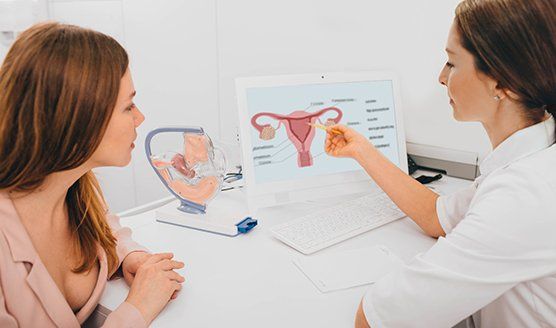Endometriosis
Women's Health Partners offers endometriosis treatment options to help you manage the pain interfering with your life. Our endometriosis specialists use the latest advancements to diagnose and treat endometriosis medically and surgically.
What is endometriosis?
Endometriosis is the presence of endometrial cells (cells lining the uterus) outside of the uterus. Endometriosis can be present almost anywhere in the body, but the most common places are in the pelvis, over the bladder, and intestines Endometriosis is common, affecting 1 in 10 women. Take the quiz to see if you might have endometriosis.
What are the symptoms?
- Irregular bleeding
- Painful periods
- Painful sex
- Pelvic pain
- Abdominal pain
- Changes in bowel habits during the menstrual cycle
- Urinary symptoms such as urinary frequency, painful urination, and pain when the bladder is full
- Infertility
- Bloating
- Fatigue
How common is endometriosis?
Endometriosis is more common than one would think! It occurs in approximately 1 in 10 reproductive-aged women.
How is endometriosis treated?
Are you looking for a endometriosis cure? Endometriosis can be treated medically and surgically. The most common treatments for endometriosis are oral contraceptives (birth control pills), Progesterone containing agents, NSAIDs (such as ibuprofen and naproxen), GnRH agonists (Lupron), and GnRH antagonists (Orilissa). When medical therapy fails, surgery is indicated.
What is robotic endometriosis excision, and when do you need it?
Surgery becomes necessary when medical treatment fails. Traditional endometriosis surgery entailed ablative treatment, such as burning or lasering endometriotic lesions. It has been shown that endometriosis excision (removal of endometriotic implants) leads to improved outcomes for the patient and less recurrence of the disease.
The da Vinci® robotic system allows 3D visualization of the lesions and the precision to remove endometriotic implants. In many cases, the lesions are present over the bladder, ureters (the tubes carrying urine from the kidney to the bladder), and small and large intestines. With robotic excision, these difficult dissections and excisions can be completed safely.




